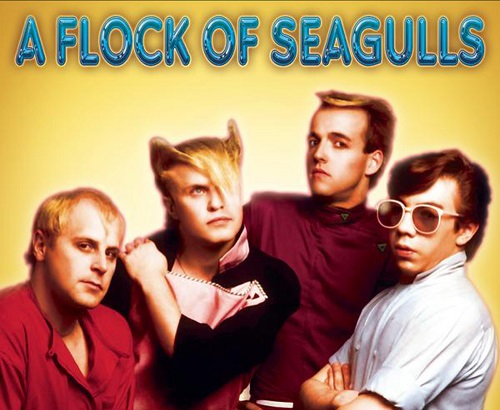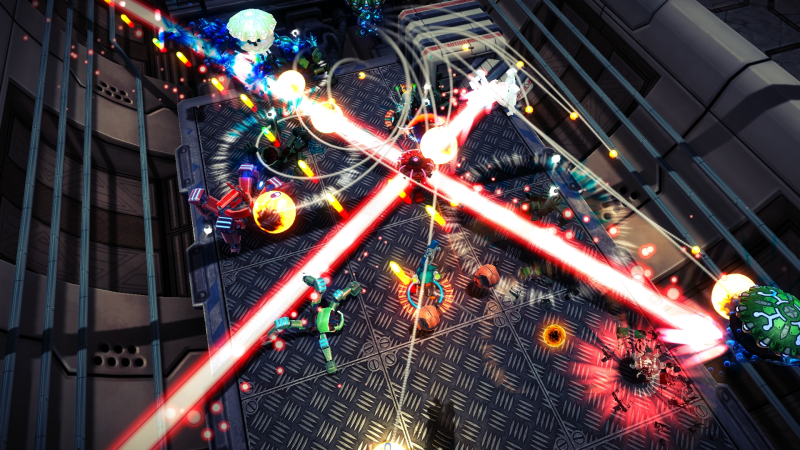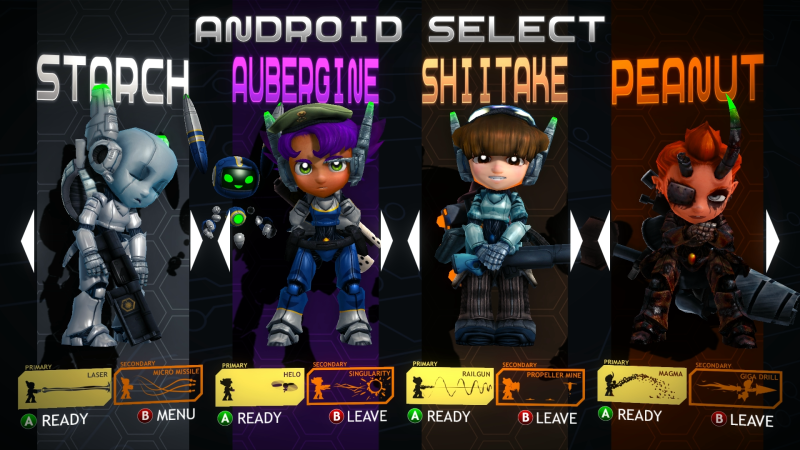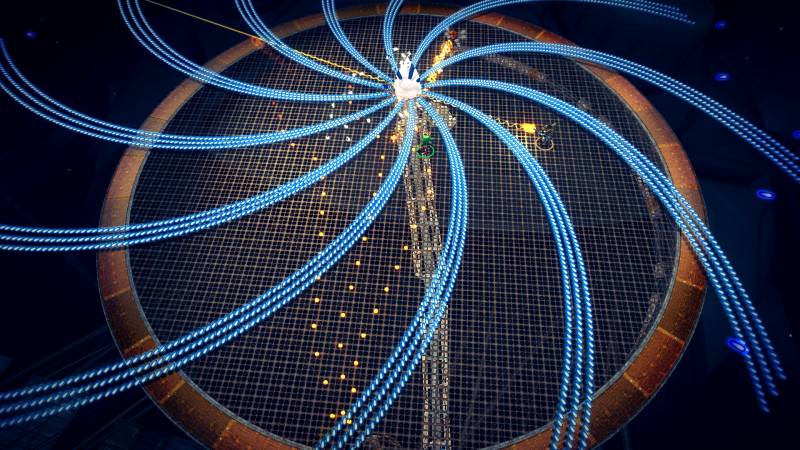Developer/Publisher: Witch Beam || Overall: 9.0
Déjà Vu is an odd thing. By its very nature it is a contradiction; a feeling of hazy familiarity in a completely unfamiliar setting. That’s not even to mention the inherent mystery in the whole process. Often you aren’t even sure where the feeling comes from; it is just a sudden hit of nostalgia that leaves you dazed and seemingly comes from outta nowhere. It could even be triggered by any number of things: going to a new area, performing a task or even reviewing a game you already reviewed a few months ago…

Things could be worse.
Déjà Vu is an odd thing. By its very nature it is a contradiction; a feeling of hazy familiarity in a completely unfamiliar setting. That’s not even to mention the inherent mystery in the whole process. Often you aren’t even sure where the feeling comes from; it is just a sudden hit of nostalgia that leaves you dazed and seemingly comes from outta nowhere. It could even be triggered by any number of things: going to a new area, performing a task or even reviewing a game you already reviewed a few months ago…

If you haven’t gotten the joke by now, maybe you should
give it another go-round?
Harkening (is that even a word?) back to a time where carpet shooters were a thing and all you needed was two buttons to play a videogame, Assault Android Cactus is now set to land its special brand of bullet hell madness to the PlayStation 4. Developed by Witch Beam, Assault Android Cactus was a pretty great game on the PC and seems willing to continue that trend on the new platform. Though, be prepared; this is a review of a game that I recently reviewed, so if you aren’t looking to hear a lot of the same just know it’s a great game and you should give it a shot if you haven’t. For those that wish to stay, get ready for me to abuse my “as expected,” “just like last time,” “also,” and “once again,” privileges.
As expected, the story doesn’t really change at all between versions. It is still a simple story set in a large ship full of robots that have just downloaded their mutiny protocols and are now dealing with their Three-Laws-of-Robotics-frustrations by way of wanton destruction. Of course, every story must have its heroes so it’s up to Cactus and all the other androids already on board to quell the mutiny and regain peace by way of wanton destruction. Thankfully, Assault Android Cactus’ titular character and all the other playable androids help to balance out all that wanton destruction with some charm. Each playable character has their own personal set of quirks that makes them stand out, and even their own combination of weapons that further separate them from the rest. These varied personalities and gameplay styles go well with multiple playthroughs of the game too. If only because the developers took the time to give each character their own unique and entertaining dialogue with every boss.
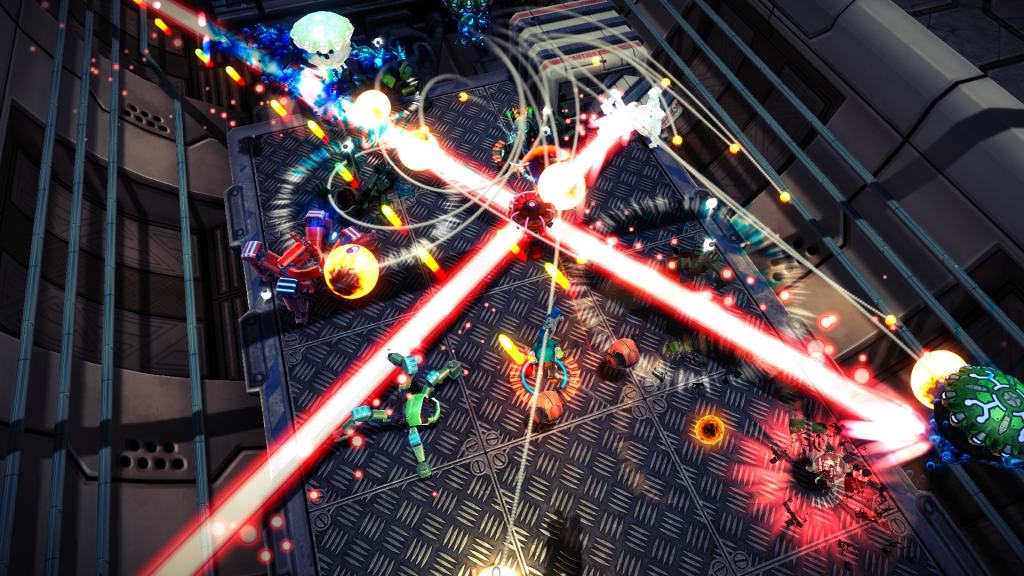
WANTON DESTRUCTION!!!
Just like last time, the gameplay is the best part of Assault Android Cactus. It’s a sweet mixture of dodging and shooting that teases the nostalgia for old carpet shooters right out of me. It can be overwhelming but it hits that sweet spot where it still seems fair. Plus, it could even be considered a bit more forgiving than its 2D forefathers because getting hit isn’t a problem, instead time is. In a bit of innovativeness on its part, you are put on a timer instead of a life system, and while getting hit does lose time it is definitely not the end. In the upper-middle portion of the screen there is a battery that is slowly draining juice and the only way to fill it up is to pick up the battery packs that the enemies drop occasionally. This forces the player to keep up a constant pace of shooting, destroying and picking up the enemy drops. This is where the game excels. Very often, I would barely get the battery packs before the battery would completely drain, it timed nearly perfect to keep the tension high and the fun just as exciting. Overall, it was pleasure to pick up and play.
Also, it was easy to pick up and play. The control scheme isn’t overly complicated and only really requires the two top triggers and both analogue sticks. The right trigger is for shooting, the left trigger is to use your special ability and the analogue sticks control your movement and aim. This simple system is more than enough to control the game and aid you in your dance of death as you hard-reboot all the evil robots on board the ship.
Once again, the graphics and music of the game aren’t all that spectacular but don’t detract from the great gameplay. There are no drawbacks on either part that are particularly worth noting. Each is just enough to complement the game nicely but not enough to be spectacular. While on the subject, there are things to complain about, but they are nitpicky at best. For one, in multiplayer it is sometimes hard to keep track of your character and, occasionally, your character might drift off screen. For two, the isometric view this game uses, instead of the standard top-down perspective, can obscure your view near large enemies and objects causing you to be hit by hidden projectiles. Lastly, there still seems to be no option for online multiplayer forcing you to socialize if you want to experience it. These are in no way game changing, but they are definitely spots for improvement.
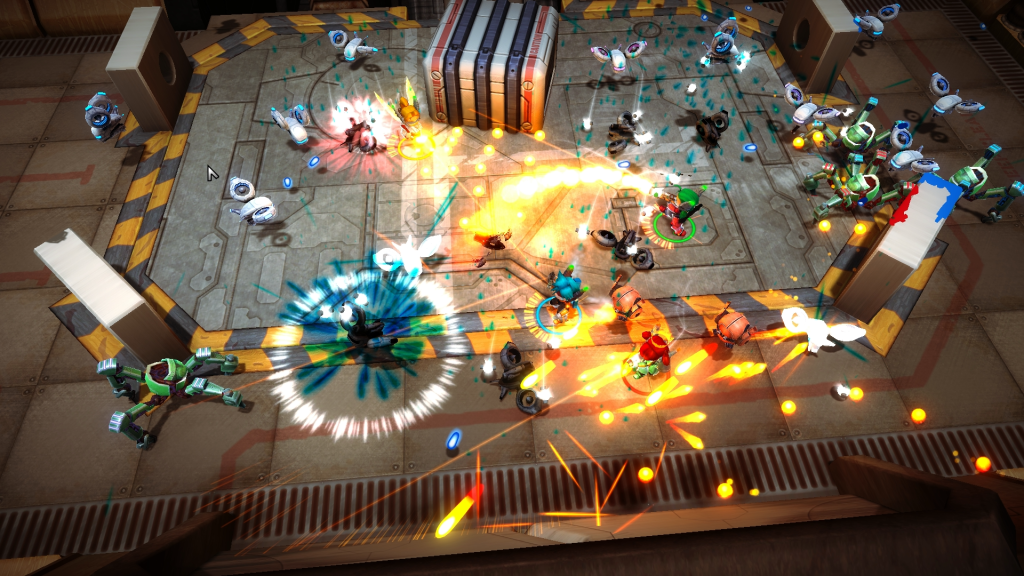
Truth be told, it’s already easy to lose yourself in all of this mess.
So there you have it, harkening (I’ve decided, it’s a word now) back to my earlier review, Assault Android Cactus does a lot of things right and a few things wrong. It’s an overall great game and you should really consider giving this quirky, hectic, and fun romp a chance on PlayStation 4… or PC if you don’t have that. Either way, its hours of enjoyment and a pretty damn good time with friends present.
If you want a more in-depth review of the game, check out my PC Review for the same game here.
When not writing reviews as Unnamedhero, Eduardo Luquin can be reached at unnamedheromk13@gmail.com.














